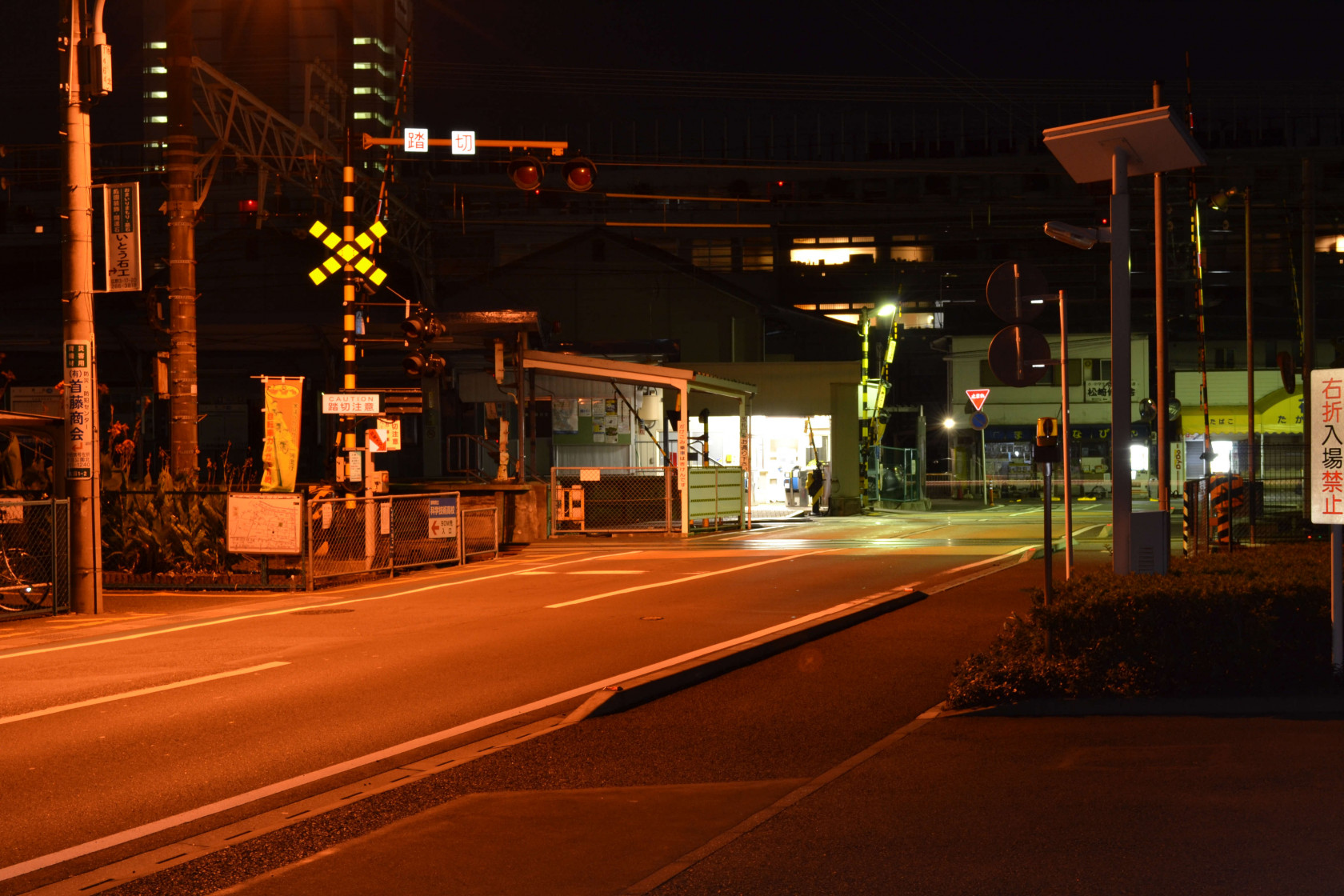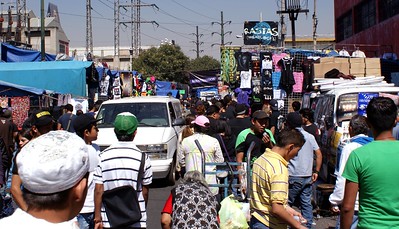The street at night [starter activity]
This activity is about bringing out how we practise assessing risks in order to live and survive. In this activity, a dark street at night will be shown to the participants so that they answer the question, “What would you do in order to navigate this street alone safely?”
The exercise is meant to bring out ways that we automatically assess threats and mitigate them in this specific situation.
Learning objectives
By the end of this activity, the participants will:
- Begin to understand that risk assessment is not a foreign activity.
- Share some experiences about what they consider when looking at a risky situation.
Who is this activity for?
This activity can be done with participants who have no experience with risk assessment as well as those who have done risk assessments in the past.
Facilitator’s note: It is important for the trainer-facilitator to be familiar with the group, as this activity might activate past trauma about navigating streets at night among some participants.
Time required
45 minutes
Resources
- A projector where you can show a picture of a street a night
- A board or flip chart paper to write down responses
- Markers.
Mechanics
Introduce the exercise by showing a picture of a street at night. It is also good to remind the participants that there are no right or wrong answers.
There are some examples provided here, but you can also take your own picture that will fit into your context.
Photo: Yuma Yanagisawa, Small Station at night, on Flickr.
Photo: Andy Worthington, Deptford High Street at night, on Flickr
Give the participants time to reflect on answering the question: “How would you navigate this street alone at night?”
Intersectional note: You do not want to assume that everyone has the same physical capacities and abilities. This is why we are using navigate instead of walk.
Ask them to write down their responses for themselves .
This should take no more than five minutes. You do not want the participants to over-think their answers.
Then spend some time getting the participants to answer the question one at a time. At this point, as a facilitator-trainer, you are just writing down the participants’ answers on the board or the flip chart paper as they speak them out.
Once you see some trends in their responses – common responses as well as responses that are unique – begin asking the participants for the reason why they responded that way.
At this stage, we are somewhat reverse-engineering the process. We started with the how’s, now we are getting to the why’s. Here, we are looking for the threats – the causes of danger – that they have assumed in their answers to the how’s.
Note down the threats as well.
It is also a good idea to look at the photo again to see elements in it that could pose a threat, or that could be seen as opportunities to allow a person alone to navigate it more safely.
For example, in the first photo:
- Point out the fences and the low bushes. Are there good hiding places?
- Which side of the road would you walk on and why?
- Given that it is a road where a small station is, does that mean that the person walking on it will have someone to reach out to, in case something happens? If so, does that make it safer to walk on this street?
- What about walking along this road to be safe from cars passing by?
In the second photo:
- Which side of the street would you walk on, and why?
- Point out the two people on the street – does their presence make the street feel safer or not?
- The van further down the street – could it be a possible vulnerability or a source of assistance in case something happens?
If you are planning to do your own night-time street photo, consider having the following elements in it:
- You can have a picture where it is clear where the light source on the street is coming from, and an obvious dark side of the street.
- You can have a picture with elements on the street that add more risk to it. For example, places where someone else can hide from the person walking. Or a street with a lot of vehicular traffic.
After spending a bit of time on the why’s of the safety tactics and the threats, ask the participants the question: “What other things do you need to know about this street in order to make better decisions about how to navigate it safely?”
Allow them time to reflect on their responses.
Then gather their responses, and write them down on the board.
Synthesise the session. Highlight some key points:
- The key strategies – the why’s and how’s – that emerged from the discussion.
- The key information needed about a situation in order to better assess it that emerged from the session.
- Connect the activity to risk assessment in that during this activity, the participants looked into a situation (the dark street) and made some decisions about their safety and security in relation to that situation based on context, experience and insight. And this was done quickly.
- Being safe as you travel through a dark street at night is a common experience. And in that moment, we are able to assess the risk – How dangerous is this street? How fast can I run? Are there points on this street where I can ask for help, just in case? Am I walking alone? Are there spots where someone else could surprise me on this street? – and apply strategies and tactics to mitigate them. We mitigate risks instinctively – as a survival mechanism. Remembering this is important to do when you get into risk assessment.
- Knowing the potential risks in this specific situation has made it possible for each of us to come up with strategies and tactics to decrease our risks in the given situation.
Facilitator’s notes
- It is really important in the first part of this activity, during the participants’ reflection on how they would navigate the street safely by themselves, that they do not over-think. That is why five minutes is enough. What we want to highlight here is the importance of instinct and lived experience in assessing risks in a given situation.
- If you sense that a participant or all of them are being activated by having to respond to the experience of walking down a dark street, take a break. Give the participants a chance to breathe. Also allow participants to opt out of this activity.
- The point of this activity is to begin exploring assessing risks. It is not important here to match this activity to the standard formula, risk = threat x probability x impact / capacity. What is important is for the participants to be able to articulate the reasons why they decided on specific tactics for navigating the dark street at night.
- Reiterate that there are no right or wrong answers, only answers based on experience and reasoning.
- If you find, based on your knowledge of the participants, that doing an activity about navigating a street alone at night may activate their past trauma, you can alternatively choose to run this activity using a crowded street during the daytime, as that might not be as traumatic for participants. Or a crowded street at night, which can present different kinds of elements for thinking through risk. Here are some example photos that you can use:
Photo: Carl Campbell, El Chopo Saturday Market crowds, on Flickr.
Photo: Waychen C, Shilin Night Market, on Flickr.







No Comments